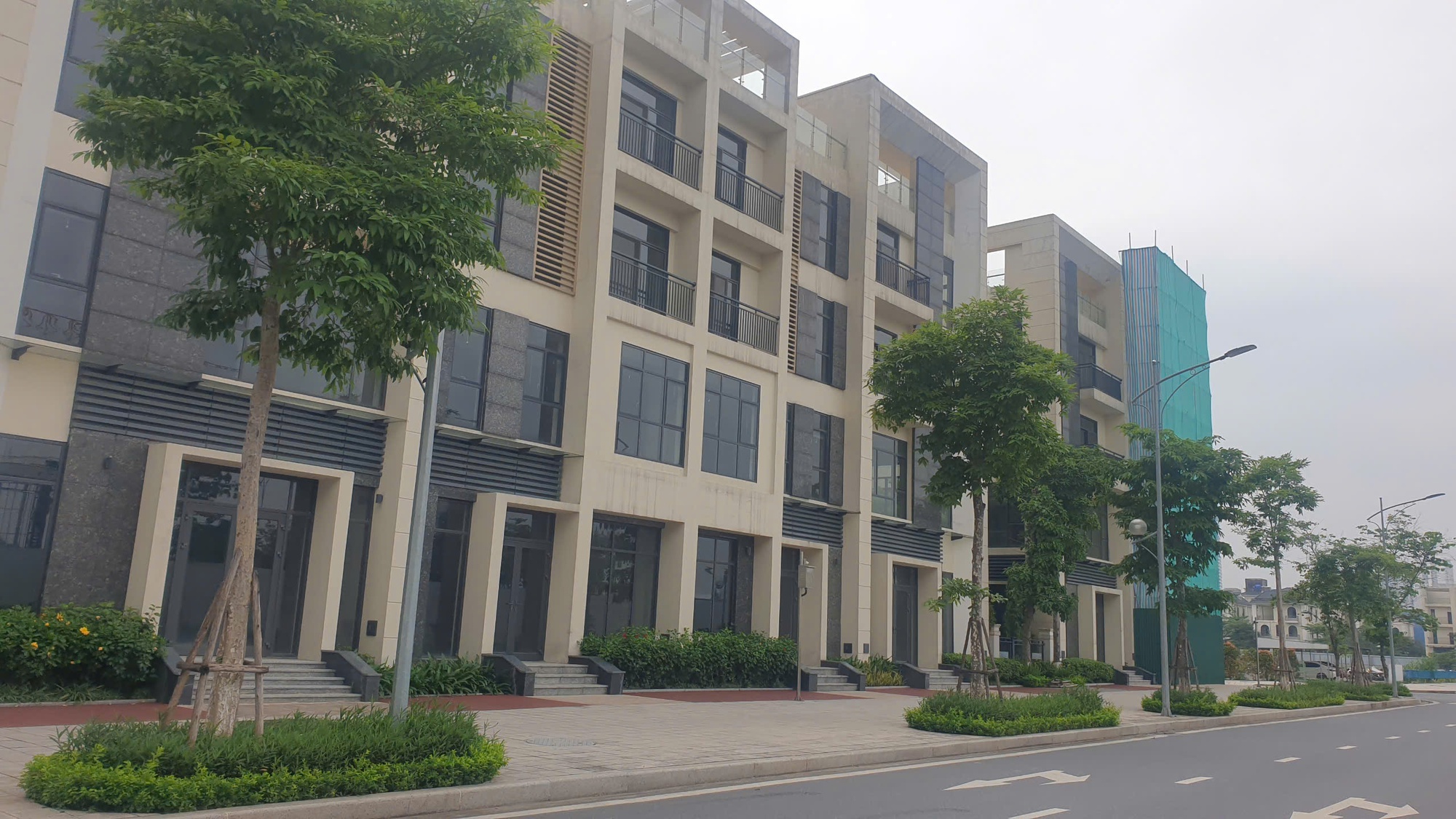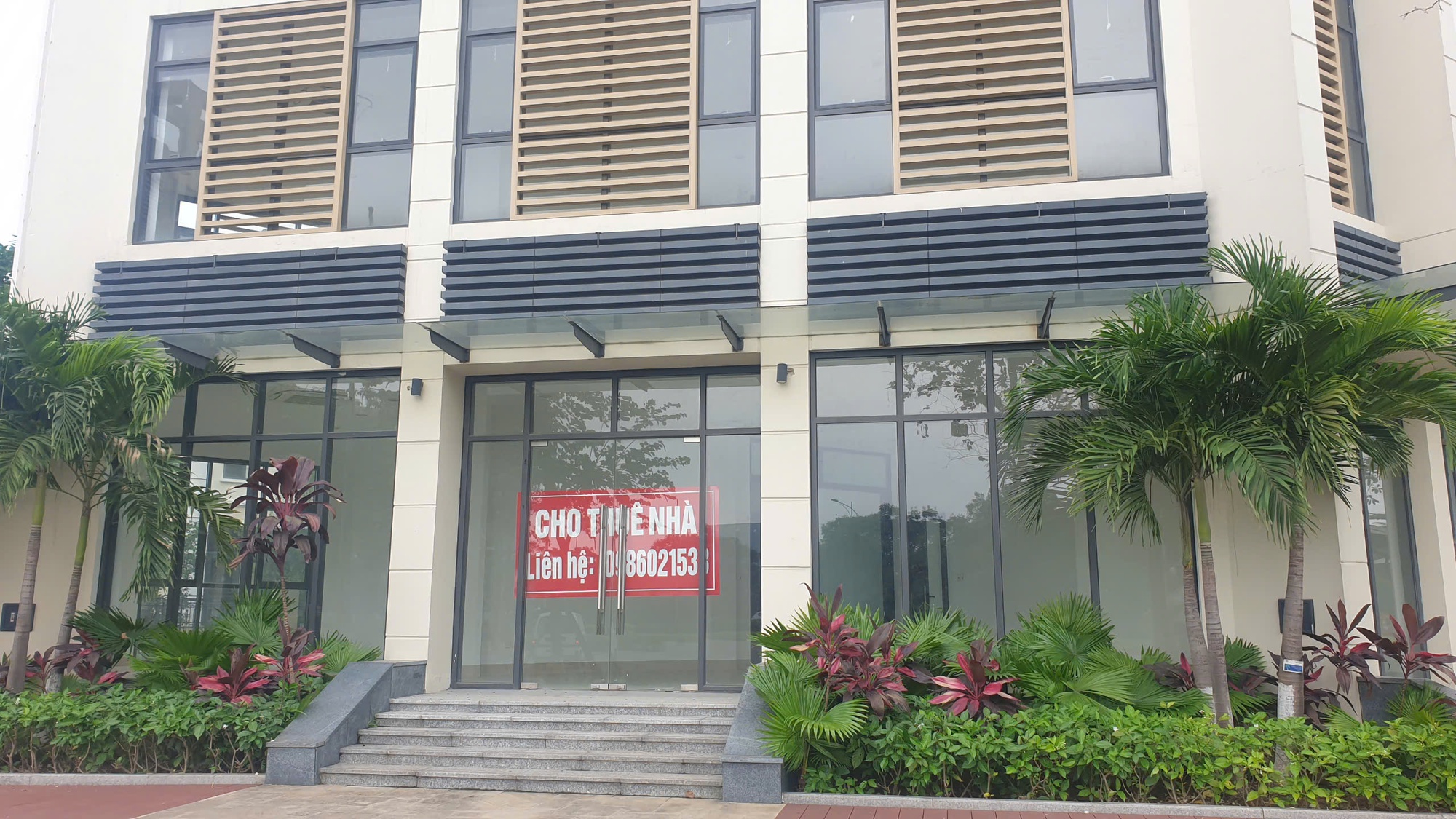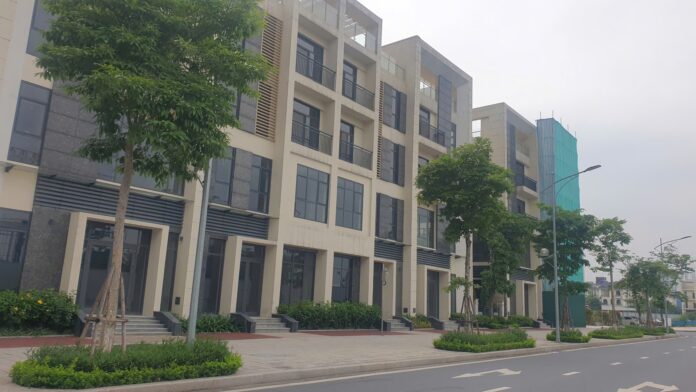
The thriving shophouse market in Vietnam

CBRE Vietnam’s report highlights the growing popularity of shophouses
According to a report by CBRE Vietnam, as of the first quarter of 2025, the secondary selling price of shophouses reached an average of 214 million VND per square meter (excluding VAT), 22% higher than the average secondary selling price of villas and adjacent houses. The price increase trend for shophouses is also higher compared to the villa and adjacent house segments.
Similarly, a recent report by Savills Vietnam showed that in the Hanoi market over the past five years, commercial houses have achieved an average annual growth rate of 11-16%.
In the first three months of 2025, Savills’ report indicated that the average primary price for commercial houses reached approximately 278 million VND per square meter of land. In the secondary market, prices increased by 9% quarter-on-quarter to 266 million VND per square meter, reflecting the existence of long-term holding and future price increase expectations.
Behind the positive price figures, the reality of business exploitation and rental yields of shophouses is currently very low.
In Ha Dong district, Hanoi, a series of shophouses in the Him Lam Van Phuc project with spacious fronts and prime locations are mostly vacant, especially the shophouses along To Huu street.
Many shophouses in this area are being offered for sale at prices ranging from 18 to 30 billion VND per unit, equivalent to about 240-300 million VND per square meter, depending on the location. Meanwhile, the rental price for a completed unit is around 50-55 million VND per month, and for an uncompleted unit, it is about 25-30 million VND per month.
A little further away, in Hoai Duc district, hundreds of shophouses in urban areas such as Son Dong Central, Lideco, and Nam An Khanh, with asking prices of over 200 million VND per square meter, are also left vacant. This situation is also occurring in Nam Tu Liem district, Hoang Mai district, and Me Linh district…
Even in the central district of Tay Ho, many vacant shophouses are a common sight. A survey of the Starlake Tay Ho Tay urban area, which has the highest land price in Hanoi, revealed numerous vacant shophouses with prime dual-frontage locations.

Starlake Tay Ho Tay urban area – a prime location for shophouses
Faced with this situation, Ms. Do Thu Hang, Senior Director of Consulting and Research at Savills Hanoi, acknowledged that despite being designed with the dual-use goal of living and business, shophouses have not yet been able to maximize their efficiency in terms of exploitation. Some projects in Hanoi have recorded low occupancy rates, especially in areas outside the city center, where synchronized infrastructure is lacking.
According to Ms. Hang, there are several main reasons for the low rental yields of commercial houses today. Firstly, the fierce competition from shopping malls. Large-scale shopping malls with professional operations, stable customer flows, and diverse utilities have become the preferred choice of many retail and F&B brands. Not only do they receive media support, but tenants in shopping malls also benefit from stable rental rates over a long period.
In contrast, shophouses tend to be operated individually and depend on the owner, making it challenging to ensure long-term stability as offered by shopping malls.
Secondly, the lack of flexibility in the shophouse rental model. In many cases, tenants are forced to rent the entire house when they only need the ground floor for business purposes. This inadvertently increases the rental price beyond their actual needs. Additionally, sharing a common entrance with the landlord or using shared utilities can be a concern for some brands.
Moreover, commercial house rental prices lack stability and are influenced by real estate price fluctuations. On the other hand, shopping malls offer a clear framework of rental prices and lease terms, with minimal fluctuations, making them more suitable for long-term business plans.

Shopping malls offer stable rental rates and professional management
The third issue pertains to legality and operations. Unlike shopping malls that have dedicated management teams to handle tasks related to completing procedures, obtaining business licenses, and addressing technical issues, the operation of a shophouse relies entirely on the tenant or landlord, lacking professional support. This presents challenges for businesses, especially those with standardized operations or those operating as part of a chain.

Shophouses face challenges in legality and operations
Mr. Pham Duc Toan, CEO of EZ Property, shared that the concept of shophouses has been misrepresented, and they are essentially still linked houses. Since 2018, investing in shophouses has become a trend in both Hanoi and Ho Chi Minh City. Most investors in this segment have strong financial capabilities and are mainly speculating on price increases for resale, with a small number investing with the expectation of rental profits.
According to Mr. Toan, at present, there are many vacant shophouse premises due to a lack of tenants. The biggest reason for this is the inconvenient location for business, low population density, and changing consumer habits, with a shift towards online shopping on e-commerce platforms.
“While it’s easy to buy shophouses, selling them is not as easy, and the rental yield is even lower than bank deposit interest rates,” Mr. Toan observed. “Moreover, investors’ thinking is evolving, which will directly impact selling prices. Shophouses seem to have outlived their historical role, and when there is no value in use, selling prices will naturally decline.”
Ms. Do Thu Hang, Senior Director of Consulting at Savills Hanoi, advised buyers to pay attention to core factors such as location, legality, developer reputation, and design when considering purchasing commercial houses. She cautioned against buying products that do not meet the necessary conditions, are overpriced, difficult to rent out, or fail to meet expected price increases.

Ms. Do Thu Hang – Senior Director of Consulting at Savills Hanoi
Despite the potential, with the market witnessing strong polarization, choosing the right product with the right location, ensuring legal compliance, and featuring optimal design is the key to guaranteeing profitability and liquidity. Investing in shophouses today is not just about choosing a product but also about choosing the right operating model. Otherwise, investors may face long-term concerns if they buy a product solely based on expected price increases while neglecting the practical exploitation equation,” Ms. Hang emphasized.
Two Vietlott Tickets Win the Jackpot!
The Vietlott Power 6/55 lottery witnessed an extraordinary event as two lucky tickets struck gold, sharing the Jackpot 2 prize in the June 10 draw.
“Hanoi Proposes Renaming Tuoi Tre Thu Do Park to Vo Thi Sau Memorial Park”
The 26.4-hectare Youth Capital Park, located in the heart of Hai Ba Trung District, Hanoi, is proposed to be renamed Vo Thi Sau Park. This beautiful green space sits in a prime location and is a beloved spot for many locals and visitors alike. With its potential new name, the park honors a Vietnamese hero, Vo Thi Sau, who bravely fought for her country’s independence. The name change is currently open for discussion, and the community’s input is valued in this decision-making process.
The Revolutionary $60 Million Waste-to-Energy Plant: Unveiling Vietnam’s First-of-its-Kind Technology
The first of its kind in Vietnam, this state-of-the-art facility boasts a unique combination of pre-processing waste treatment technology, fluidized bed incinerators, and Siemens steam turbines.





















